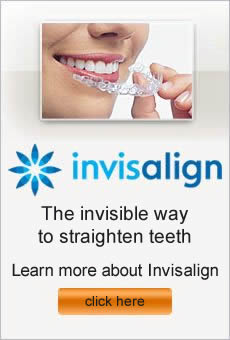The foods you eat and when you eat them affects your overall health, but also the health of your teeth and gums. If you eat too many foods loaded with sugar, and not enough foods containing important nutrients, your risk of tooth decay increases. How can choosing a smart diet prevent dental problems?
When plaque on your teeth meets sugar, which then causes acid to attack your teeth, your teeth begin to decay. Foods and drinks containing any type of sugar can lead to tooth decay. You should make a habit of reading the nutrition labels on foods, so that you can opt for the choices lowest in sugar. Common sugar-filled items to avoid include sodas, candy, cookies, and pastries.
On the other hand, certain nutrients help build up the health of your teeth and gums. If your diet lacks those vitamins and minerals, the tissues in your mouth will be less resistant to infection. This can lead to gum disease, which if untreated can end up in tooth loss. Experts suggest that gum disease worsens faster in people who maintain a poor diet.
The key is to eat a balanced diet containing the five major food groups: fruits, vegetables, whole grains, lean protein, and low-fat dairy foods. It’s also important to drink plenty of water. You should also limit snacking between meals, because those tend to be foods that fall outside the recommended food items for healthy teeth. Also, more saliva is produced during a meal, which is helpful in cleaning your mouth and reducing the harmful effects of acid on your teeth and gums.
For good dental health, remember to practice proper dental hygiene such as brushing and flossing regularly. Maintaining consistent dental checkups is another way to maintain your oral health. In the meantime, making smart choices in your diet will help keep your mouth in tip-top shape.
Dr. Fotovat is a orthodontist in Sherman Oaks CA
How do you know when you’ve done something to your orthodontic work that is considered an emergency? Major orthodontic emergencies don’t happen that often, but immediate attention is needed when they do. Less serious issues can usually wait until an appointment. Having some guidelines to explain the difference between types of emergencies is helpful.
Infection
Occasionally a patient’s tooth may become infected after orthodontic treatment. It may not even be related to your appliances, but either way an infection requires professional treatment. If you have pain or swelling near a tooth that continues to worsen, call your orthodontist.
Injury
Accidents can happen whether or not you are undergoing orthodontic treatment. See your orthodontist immediately if you injure your teeth, mouth, or jaw. An X-ray may be necessary to determine the extent of the damage. If your orthodontic appliances are affected, they may require adjustment or replacement.
Minor issues
It is much more common for minor problems to arise with your orthodontic work. Some issues that you can either repair on your own or wait until your next office visit include:
- Poking wire
- Loose wire
- Loose bracket
- Loose elastic band
- Lost or broken elastic band
- Loose appliance
- Headgear that does not fit
- General soreness
Avoiding problems
Most minor orthodontic issues can occur with normal wear and tear. You can help avoid mishaps by steering clear of foods that your orthodontist has warned you about. Hard or sticky items can cause problems. Also, overly vigorous brushing can harm your orthodontics. None of the examples of minor issues should be considered emergencies unless severe or prolonged pain is present.
If you are having an orthodontic emergency, contact our Sherman Oaks orthodontists office.
If you are considering getting braces to improve your smile and the function of your mouth, you might require tooth extractions prior to getting the appliances on your teeth. Your orthodontist may recommend upon consultation that your treatment will be most effective after having some teeth removed. In fact, sometimes tooth extraction is the only way to achieve your goals for orthodontic treatment.
The most common reason for tooth extraction prior to braces is overcrowded teeth, in which space must be created to obtain proper tooth alignment. Doctors often recommend removing the teeth in sets of two or four, taking the same teeth from the top and the bottom at the same time. This helps create a symmetrical smile.
Another problem that can be aided from removing teeth is protrusion, which is when the upper teeth are out too far or the lower teeth are too far back. Tooth extraction can cause needed space to reposition the front teeth and stop the teeth and lips from protruding.
Overbites or underbites also sometimes require tooth extraction. When the upper jaw extends further than the lower jaw (overbite) or the lower jaw extends past the upper jaw (underbite), removing specific teeth can be helpful before moving the remaining teeth into better position. This can help prevent jaw surgery later.
If you and your orthodontist decide tooth extraction is best for you, often you will be referred to an oral surgeon. These specialists are trained to extract teeth with the ideal results and least pain. Usually you can return to your normal activities within a day or two of extraction, while following your doctor’s instructions for eating and oral care. Once your mouth has healed, you can return to your orthodontist to begin your braces treatment.
More and more adults today are getting braces on their teeth. It may be their first time for orthodontic treatment, or it may be another go-round after their mouth changed after having braces during their youth. No matter the situation, so many adults wear braces these days that it is nothing to be embarrassed about. Adult braces can be a life-changing choice for many people.
Why should adults consider braces?
Some orthodontists report that almost half of their patients are adults. The truth is that at any age, people long for beautiful smiles. Having crooked teeth or misaligned bites can be a detriment in the business world, and certainly people believe there are social advantages to a nice smile as well.
Are there advantages to getting braces as an adult?
Although orthodontics improves the smiles for many children, there are some additional benefits that adults have. Adults tend to be more aware of the effects of foods on their teeth and braces, so they follow their orthodontist’s advice more carefully about diet restrictions. Also, people who are paying for their own treatment instead of relying on their parents usually want the most of their money and are careful with their braces and related guidelines.
Will treatment last longer in adults?
Wearing braces is really only as successful as the follow-through. It is vital to wear your retainer as instructed so that your teeth don’t change. Also, keeping a permanent retainer on for the rest of your life is a great way to make sure your teeth don’t move. As always, proper dental care including regular brushing, flossing, and checkups is the ideal way to maintain your beautiful new smile.
Orthodontist Dr. Fotovat treats adults, teens, and children from Sherman Oaks, CA and the surrounding areas.
Problems with the alignment of your teeth and jaw may not only bother you about how they look, but also how they function and feel. Some types of orthodontic problems can cause further issues as you age. Consulting an orthodontist for an examination and X-rays will help identify the extent of your problems, and provide recommendations on any treatment to correct the issues. Here is a description of the most common types of orthodontic problems that people face.
Teeth crowding
Crowding of your teeth occurs when your mouth isn’t big enough to fit all of your permanent teeth. This causes your teeth to grow over one another, leading to overlapping. Crowding can cause serious oral health problems because it is difficult to keep your teeth clean and healthy. Tooth decay, cavities, and gum disease are possible outcomes of crowded teeth.
Bite problems
There are various kinds of problems you can have with your bite, which is the way your upper and lower jaws come together. An overbite means that your top teeth cover a large portion of your bottom teeth. An underbite means that your lower jaw has outgrown your upper jaw, causing your bottom teeth to stick out over your top teeth. There’s also a crossbite, which indicates your front or back top teeth fit inside your lower teeth. Overjet is another type of bite problem in which your bottom teeth don’t extend far enough or your upper teeth extend too far, causing your teeth to look protruded. These various bite issues can lead to problems with eating, speech, and tooth wear.
Spacing issues
If you are missing any teeth or have a dental arch that isn’t the right size, you may have spacing issues in your mouth. Incorrect spacing can cause your teeth to shift into the wrong locations, requiring orthodontic treatment.
Dr. Fotovat is an Orthodontist in Sherman Oaks, CA



